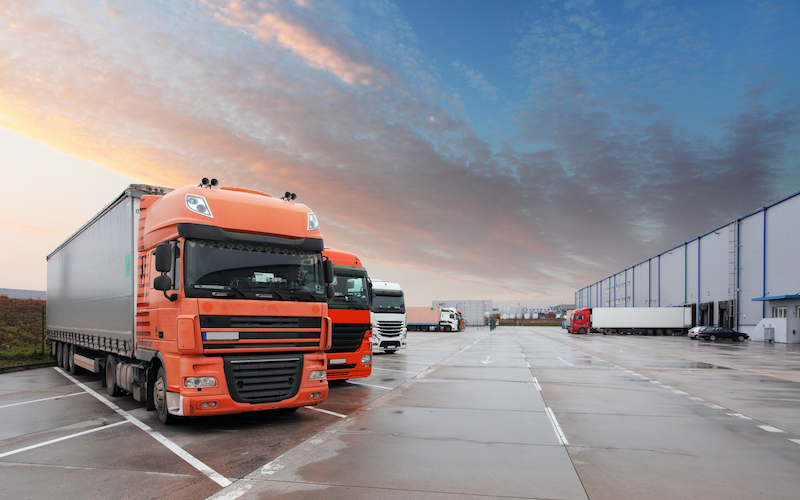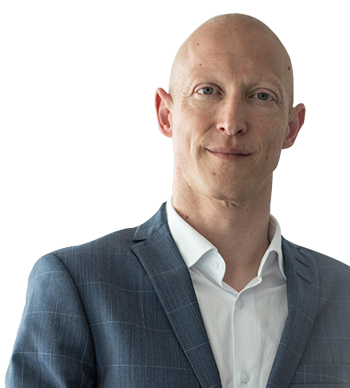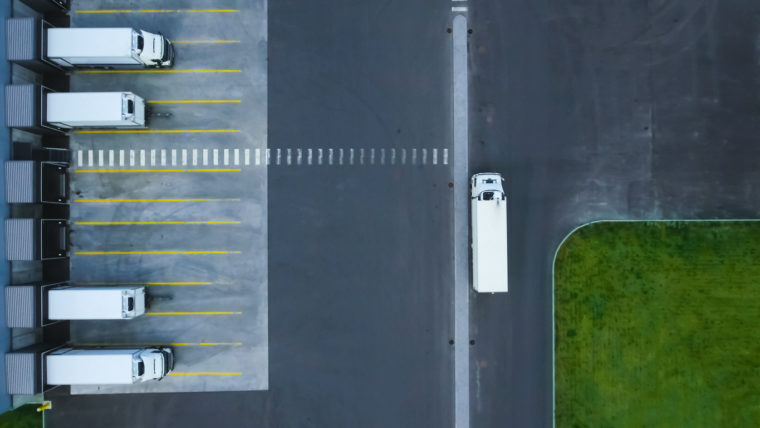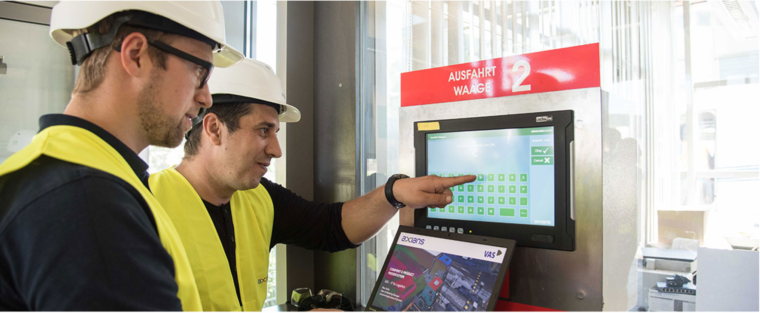How companies in the construction sector are welding IT and OT together to create a single solution

How companies in the construction sector are welding IT and OT together to create a single solution
For a long time, OT and IT were run separately, but are now increasingly coming together in the course of digitalization. In this article, Marc Graner, Managing Director at Axians Industrial Applications & Services in Ulm, explains the connection of the two worlds in the branch of the construction industry.
In production and logistics it is now more important than ever to observe processes in detail in order to further automate them in a meaningful digital context. This is the only way that companies can exhaust the full optimization potential.
With these aims, various, large, internationally operating manufacturers in the construction sector have decided in favour of our dispatch automation software VAS and ultimately for us as partner. Because, as Axians Industrial Applications & Services, all we’ve been really doing for the last 20 years is bringing IT and OT together and advancing digitalization, even if that’s not what it was called at the time. Well into the 2.000s, Information and Operational Technologies such as programmable logic control (PLC) were still mainly run on a completely separate basis. Apart from that, even the term OT was not as precisely specified as terms such as Industry 4.0 or the Internet of Things.

Marc Graner
Managing Director, Axians Industrial Applications & Services GmbH
TOPICS
In technical terms, it has, in the meantime, become relatively simple to connect these two worlds, and then even to combine it all in the cloud with the Internet of Things (IoT). However, instead of merely delivering chic modern technology, it is a question on the one hand of bringing various types of experts together, because IT definitely doesn’t speak the same language as the automation technicians in the production halls of the industry.

In production and logistics it is now more important than ever to observe processes in detail. Source: iStock / gorodenkoff.
On the other hand, the same rules still apply when software, processes and humans meet up. We need clear targets, orchestration and experts with a connection and experience in a branch if a project is to promise success.
NEW IMPETUS FOR THE PROCESSES
At one time processes were still simple, usually even separate. Almost straightforward – conveniently grouped in no more than a handful of manageable areas. They were still complex enough, however, that you could easily lose your way in an ERP system if you didn’t have the right partners on board. Nowadays it’s all much more explosive. Suddenly it is possible to combine many other areas, to allow maximum granularity with enormous data volumes, to aggregate data and combine them with artificial intelligence. Processes can be newly created at will from the hitherto unknown worlds being generated by the combination of IT and OT. Processes can thus bring enormous advantages but can also lead to a nightmare complexity for the process owners in the sectors. This demands people who can translate for the users what is possible, what functions, and explain to them the possible limits, e.g. demonstrate where and when which data are available, and how details can have an effect. Ideally, these people have experience and expertise in both worlds combined with industry know-how.
This is exactly what Axians Industrial Applications & Services does. They combine experts with 20 years of consulting experience in the construction and raw materials industry with young, competent specialists with a solid mastery of state-of-the-art technology. Major global groups such as HeidelbergCement AG as well as EUROVIA (a subsidiary of the VINCI Energies Group), one of the world’s leading providers in transport infrastructure and urban development, rely on experts and software from the IAS.
INDUSTRIAL PLANT LOGISTICS NEWLY DEFINED
Wherever construction materials and bulk goods are to be moved securely and with logistic perfection in an industrial environment, a lot of things have to be well coordinated. Good coordination is needed for an appropriately high degree of automation, from the weighing and loading of bulk goods by silo or with the wheel loader. But good planning is also necessary for coordination of packed goods equipped with the necessary information terminals. And that’s where the perfection of the optimization lies in the details of processes. As always, of course, the devil is in the detail. It is worth taking a closer look here in order to avoid logistic bottlenecks and, above all, to take full advantage of the optimizations. Anyone can do software. Software has been promising to make life easier for people since the 1980s. But has it really done that? That can only be answered with a yes if people have thought about why a software should be used. Merely applying a software or a tool and hoping that it solves problems has never worked. A software will only lead to advantages and show the corresponding effects in terms of optimization when it is adjusted and coordinated for the people, the organization and the sector.
But different companies and sectors will always have different requirements. While one group is optimizing 400 locations as standard in a single country, somewhere else in the world it is a success when 2,000 concrete trucks per day (!) are steered fully automatically through a large cement works in the Middle East. Parallel and definitely always omnipresent: safety: safety that can be enormously supported by a software wherever people meet industry.
CONNECTING WORLDS MEANS CONNECTING PEOPLE
It is, therefore, also important to understand people. It is not sufficient to simply present them with a new technology. It is also important to enable the responsible parties onsite to conceive, combine, operate, understand the technology, and to apply it in such a way that it truly develops its benefits and added value. A lot of individual consulting is required and therein lies one of our strengths. After all, as already mentioned, it is about welding IT and OT together including the respective departments or divisions to achieve an integrative solution.
Our customers are often companies on the enterprise or group level. We would be moving on very thin ice here if we didn’t understand anything about the branch of the sector. This is why our services are concentrated on groups involved in building and construction materials. Because delivering technology without background is no fun for anyone.
UNDERSTANDING THE SECTOR
With regular new software versions over 20 years, some of our customers have become our partners. Partners in the sense that we do not see them as short-term customers with whom we do one project, but because we learn the processes of the sector from them and accompany them in the long term as they use our software. These are the processes that we then implement in software in order that we can offer our modules on the market with the optimum orientation. This mutually attractive methodology opens new doors with further potential.
Group companies are often internationally or even globally structured, which means that we are challenged to think not only in a German or European way. Rather, we have to be willing to go beyond the normal patterns. This applies not only to the language, but also to the culture, laws, and customs of the respective country. The ability to do this is what distinguishes the consulting service of our IAS experts. This is the only way we can be successful internationally.
FROM THE SOFTWARE APPLICATION TO IAS SUITE
At the start it is usually about dispatch automation and standardization of the works processes coupled with the necessary optimization and administrability. This is followed rapidly by advance planning and disposition with the corresponding services of all partners of the logistics chain. Where formerly a lot was done manually and by telephone, which is of course personnel-intensive and prone to error, nowadays there are portal solutions. These are grouped as a complement to the modules of dispatch automation in the IAS Suite.
Where stress-intensive work for the coordination of the supply chain was once the order of the day, now we use the potential of process-supporting software. Humans receive support from the software. The logistics partner receives from the construction materials manufacturer a better service, the maintenance and administration of a plant becomes the focus of the new working environment.
This can only function, however, if we first consider which detail will make the difference when and for which sector. If you want to understand the sector, it is a good idea to understand its partners and suppliers. Only if we respect the partner and know how fast the forwarding business has to function today, can we enable the truck driver to easily control the automation.
With the aid of software and the corresponding modern plants, loading construction materials in full automation 24/7 is as simple as picking up cash from an ATM. What was once distributed as paper in x-times duplication over the entire logistics chain, is now handled by an app. Specific mobile applications are being developed here that can be rapidly implemented and represent perfect process supporters combined with the corresponding plant data to make further optimizations possible in the first place. With delivery deadlines coordinated and automated in this way, all the parties involved know in advance when which protective equipment is necessary and whether the safety certification of the driver is still up to date.

Loading constructions materials in full automaton becomes child’s play in software-aided plants. Source: Axians.
IT is moving to the cloud, while OT remains largely on-premise. This has to be properly coordinated and combined and is definitely not a contradiction. Properly thought through, it is possible to have the best of both worlds. Enriching central systems with decentralized PLC data and thus achieving the required optimizations is a wonderful discipline which also guarantees our experts the necessary variation.
Our VAS System bundles the decentralized industry data and, with appropriate portions of AI, can also give independent recommendations or make decisions. As soon as we come to the superordinate context, however, the data goes, for example, into an SAP system where they are again centrally evaluated in the big data environment by Business Intelligence or Business Analytics. The corresponding Axians experts can also provide support here.
In short, the added value of our VAS solution or the IAS Suite consists in recovering the OT processes and data, moving them and translating them in such a way that they can be understood by central IT, just as we at Axians Industrial Applications & Services also see ourselves as bridge builders between the OT and IT teams.
Source title picture: title picture: iStock / TomasSereda


